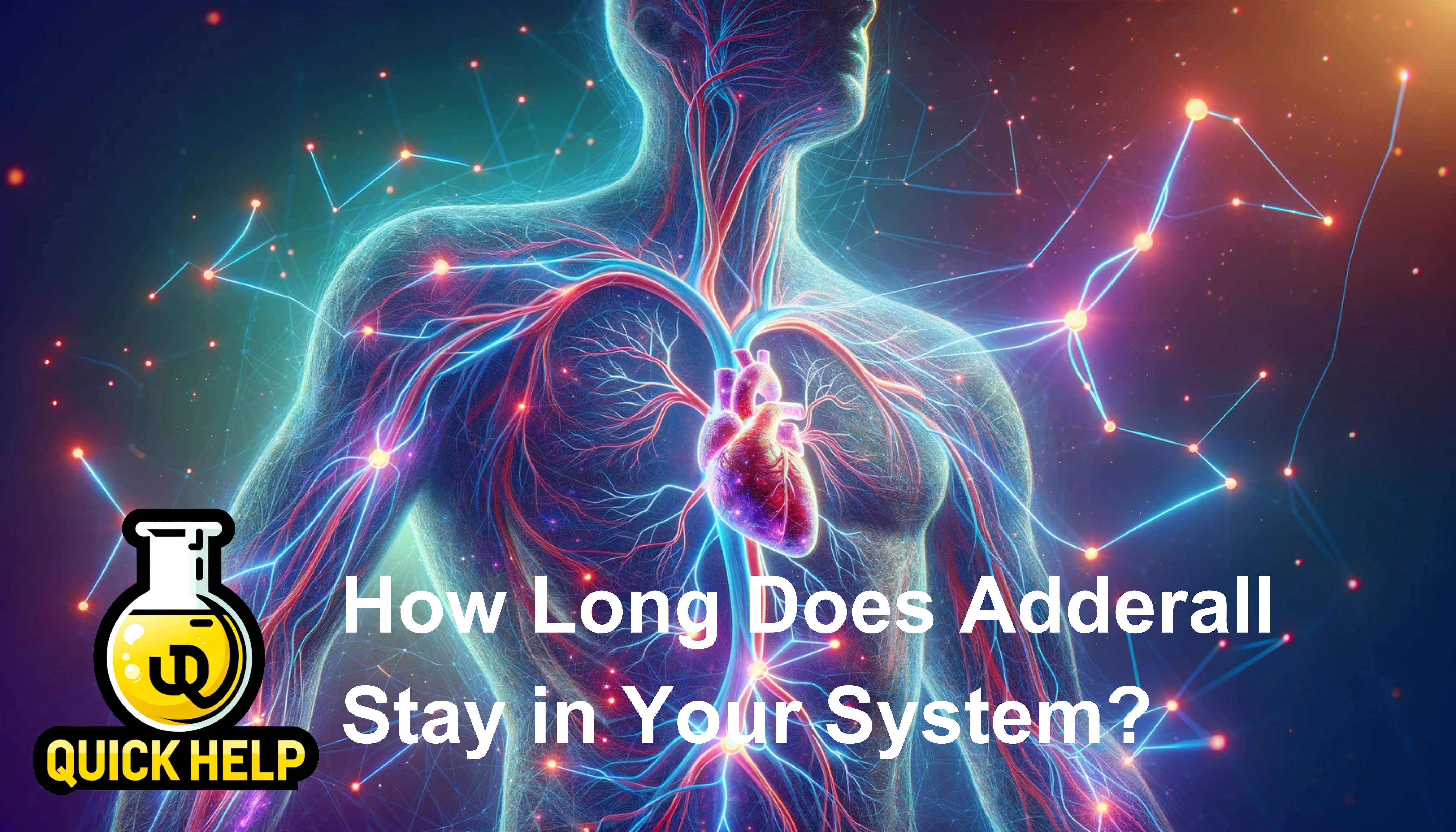Understanding Nicotine and its Effects
Decoding the Impact of Nicotine on the Body is a crucial aspect of Understanding Nicotine and its Effects. Nicotine, a highly addictive alkaloid found in tobacco products, affects people differently depending on various factors such as metabolism, smoking habits, and overall health. When nicotine enters the body, it undergoes a chemical transformation, breaking down into metabolites like cotinine. These metabolites can be detected through different types of tests such as urine, blood, saliva, and hair tests, which determine how long nicotine stays in the system. For example, a urine test can detect nicotine and its metabolites for at least three days after nicotine intake, while a blood test can detect nicotine up to two hours after smoking. These tests are commonly used by employers, insurers, and even life insurance policy providers to assess nicotine exposure levels. Understanding the timeframe in which nicotine remains in the body is essential for individuals in various scenarios, whether it be for health reasons, employment requirements, or insurance purposes.
Decoding the Impact of Nicotine on the Body
Nicotine, a highly addictive substance found in tobacco products, has a profound impact on the body. Studies conducted by the CDC and other reputable organizations have revealed that nicotine stays in your system for at least 3 days after using tobacco. The presence of nicotine and its breakdown product, cotinine, can be detected through urine, blood, and hair testing. However, it’s important to note that the duration may vary depending on factors such as genetic ancestry, overall health, and lifestyle choices. During this time, nicotine can affect various aspects of your body, including your appetite, sleep patterns, and weight. Many individuals experience an increase in appetite and weight gain when using nicotine products, while others may have trouble sleeping or have disruptions in their sleep pattern. To counter these effects, it is recommended to make lifestyle tweaks such as incorporating exercise, staying hydrated with water, and consuming foods rich in antioxidants. Additionally, seeking advice and support from healthcare professionals can greatly assist in managing nicotine withdrawal symptoms during the process.
Side Effects and Risks Associated with Nicotine
Nicotine, a highly addictive substance found in tobacco products, is known to have various side effects and risks associated with its use. One of the common questions regarding nicotine is how long does it stay in your system? According to research, nicotine can be detected in urine tests for at least 3 days after tobacco use. Its presence can also be measured in saliva, blood, and hair follicles. The concentration of nicotine in these tests depends on factors such as the frequency and duration of nicotine use, as well as individual metabolism and genetics.
Nicotine can also be found in breast milk, which is a concern for breastfeeding mothers who are tobacco users. The nicotine levels in breast milk can vary depending on the person’s smoking habits and the time elapsed since smoking. Nicotine’s presence in breast milk can have detrimental effects on the baby’s health, including increased heart rate and restlessness. Therefore, it is recommended for tobacco users who are breastfeeding to seek support from smoking cessation programs or nicotine replacement therapy (NRT) to reduce the exposure of nicotine to their infants.
The Journey of Nicotine in the System
Nicotine, a highly addictive substance found in tobacco and vaping products, follows a specific journey in the body. When someone smokes a cigarette or vapes, the nicotine enters the bloodstream through inhalation. From there, it quickly travels to the brain, where it binds to nicotine receptors and triggers the release of dopamine, a neurotransmitter associated with pleasure and reward. The effects of nicotine can be felt within seconds, and they typically last for a short period of time. However, nicotine itself can stay in the system for a longer duration. For example, nicotine and its by-products can be detected in urine tests for at least three to four days after smoking or vaping. Hair tests can show nicotine use up to 90 days, while saliva and blood tests have shorter detection windows of up to five days. It’s important to note that these detection times can vary based on factors such as the frequency of nicotine use, metabolism, and individual differences. Understanding how long nicotine stays in your system is crucial for various reasons, including employment screenings, court cases, and health assessments.
From First Puff to Complete Breakdown Timeline of Nicotine
From the moment you take your first puff, nicotine begins its intricate journey through your body, leaving traces that can be detected through various tests. One of the most common methods of testing for nicotine in the system is through urine analysis. Research shows that nicotine can be detected in urine at least three days after consumption. However, this timescale can vary depending on factors such as the frequency and quantity of nicotine intake, as well as individual factors such as metabolism and hydration levels. In some cases, cotinine levels, a metabolite of nicotine, can still be detected in urine up to five days after nicotine exposure.
Nicotine can also be detected in other bodily fluids such as blood, saliva, and hair. Blood tests are particularly effective in measuring nicotine levels immediately after smoking, as it takes approximately two hours for nicotine to reach its peak concentration in the blood. Saliva tests, on the other hand, can detect nicotine for a day or more after consumption, while hair tests can detect nicotine traces for a longer period of time, typically around three to four days after exposure. These different testing methods provide doctors with valuable insights into a person’s nicotine consumption, allowing them to assess its impact on an individual’s health.
Traces in Saliva, Blood and Hair Follicles
Traces of nicotine can be detected in various bodily fluids, including saliva, blood, and hair follicles. These tests can provide valuable information about the presence and duration of nicotine in the body. For example, a nicotine urine test can determine how long nicotine stays in your system, usually for at least 3 days after your last use. On the other hand, nicotine can be detected in the bloodstream within two hours after smoking a cigarette, and it may take about three days for nicotine levels to decrease significantly. Hair follicle tests can detect nicotine for a longer period, typically up to five days or even longer, depending on the length and growth rate of the hair.
When nicotine is absorbed into the bloodstream, it circulates throughout the body and can be excreted through various means, such as sweat and body repair processes. Antioxidants play a crucial role in removing nicotine and its by-products from the body. It’s important to note that nicotine can enter the body not only through traditional tobacco smoke but also through vaping devices. While vaping is often perceived as a safer alternative to smoking, the efficiency of nicotine absorption may differ between the two methods. However, the exact amount of nicotine and its traces in the body can vary based on individual factors such as age, hormonal levels, and overall health. According to a lung association report, there are benefits to reducing nicotine exposure, regardless of the method used. However, it’s essential to be cautious as inaccuracies in labeling and differences in nicotine content in vaping solutions can pose a challenge for consumers, healthcare providers, and insurance companies. Therefore, proper testing, such as a nicotine urine test or cotinine urine test, is necessary to accurately determine the levels of nicotine and cotinine in the body.
The Role of Smoking in Nicotine Intake
Smoking plays a significant role in the intake of nicotine into the body. When someone smokes a cigarette, nicotine is absorbed into the bloodstream through the lungs, reaching peak levels within about two hours after smoking. This nicotine then travels throughout the body, where it can be detected in different places, such as saliva, blood, and hair follicles. The duration of nicotine traces in the body varies depending on several factors, including health history, age, gender, and overall health. For instance, nicotine can be detected in a urine sample for at least three days after smoking, while it can remain in the blood for about three to four days. It’s important to note that even nonsmokers can be exposed to nicotine through secondhand smoke or policies that allow smoking in certain areas. This exposure can also lead to the presence of nicotine in the body, potentially causing health problems. Understanding how long nicotine stays in the body is crucial for individuals undergoing health exams, seeking health insurance, or facing job-related drug tests. Therefore, it’s important to consider these factors and be aware of the risks associated with nicotine intake.
Traditional Tobacco Vs Vaping: Comparative Analysis
When comparing traditional tobacco to vaping, one key consideration is how long nicotine stays in your system. When testing urine samples, nicotine can typically be detected at least three days after tobacco use. In contrast, vaping nicotine may only be detectable for up to two hours after use. Additionally, nicotine derived from tobacco smoke can be detected in job-related tests, which may be a concern for non-smokers. However, nicotine by-products in saliva samples can be found for three to four days after tobacco use, while vaping may only leave traces for about a day or more. These differences in detection time can have implications for nicotine testing and the use of tobacco products in various settings.
Nicotine replacement therapy, such as nicotine gum or patches, may be an alternative for those looking to quit smoking. The rate at which nicotine is metabolized varies from person to person, making it a determinant in how long nicotine stays in the system. Factors such as frequency and concentration of tobacco use, as well as the quantity of nicotine replacements used, can influence the length of time nicotine remains detectable. For instance, someone who frequently smokes and uses nicotine replacements may have nicotine in their system for up to five days. On the other hand, a non-smoker using minimal nicotine replacements may only have detectable levels for about four days after use. Understanding how the body processes nicotine is crucial in developing effective smoking cessation strategies and implementing nicotine testing protocols.
Nicotine Overdose: Symptoms and Support
Nicotine Overdose: Symptoms and Support
Nicotine overdose can occur when a person ingests or inhales excessive amounts of nicotine, either through smoking tobacco products or using nicotine replacement therapies. The symptoms of nicotine overdose can vary depending on the amount of nicotine consumed, the person’s metabolism rate, and other factors such as their overall health and habits.
Some common symptoms of nicotine overdose include increased heart rate, high blood pressure, nausea, dizziness, and anxiety. In severe cases, it can lead to seizures, difficulty breathing, and even loss of consciousness. If you suspect a nicotine overdose, it is important to seek medical help immediately.
Treatment for nicotine overdose often involves supportive care to manage the symptoms and prevent complications. This may include monitoring the person’s vital signs, providing oxygen therapy, and administering medications to stabilize their condition. It is crucial to remember that nicotine overdose can be life-threatening, especially for individuals with underlying health conditions such as heart disease or mental health issues. Seeking prompt medical attention is essential to prevent further complications and ensure proper support for the affected individual.
How Long Does Nicotine Stay in the System via Different Tests
Different tests can be used to determine how long nicotine stays in the system. One such test is the urine test, which can detect the presence of nicotine and its metabolite called cotinine. Research has shown that nicotine can be detected in urine for at least three days after use. Saliva testing is another method that can be used to detect nicotine. Nicotine can be detected in saliva as soon as two hours after use and can remain detectable for about three to four days. Blood testing is also commonly used to measure nicotine exposure. It typically takes about three to four days for nicotine to be eliminated from the bloodstream. Additionally, hair testing can provide a longer detection window. Nicotine and its metabolites can be detected in hair for up to five days after use. These tests can be helpful for clinicians and doctors to determine nicotine concentrations and assess the amount of nicotine exposure a person has had.
The Answer through Urine Testing
Urine testing is a commonly used method to determine how long nicotine stays in your system. It is a non-invasive and relatively simple procedure that provides helpful information for individuals wanting to know the presence and concentration of nicotine in their body. When a man or woman visits a lab or technician for a urine test, they provide a urine sample that is then analyzed for nicotine and its metabolite, cotinine. The lab compares the concentrations of these substances to the reference ranges to determine the positivity or negativity of nicotine use. Factors such as kidney function, medications, diet, exercise, and overall health can influence the detection and sensitivity of the test, but generally, nicotine remains detectable in urine for at least 3 days after tobacco product use.
Hair, Saliva and BloodBased Nicotine Tests
Hair, saliva, and blood-based nicotine tests are commonly used to determine how long nicotine stays in your system. Urine testing is one method to measure nicotine levels and can detect the compound at least 3 days after its use. This test is often used to assess nicotine intake and its byproducts. On the other hand, hair follicle testing can detect nicotine use up to five days after consumption. This method is considered to be more accurate and is commonly used in healthcare facilities and by professional sports organizations. Blood-based testing can also detect nicotine and its byproducts, typically within two hours after nicotine use. These tests can provide valuable information regarding nicotine intake and help professionals assess the impact of nicotine on lung health.
When it comes to nicotine testing, there are numerous factors to consider. Vaping, for example, can cause nicotine to stay in the body for a longer duration compared to traditional smoking. Nicotine patches, available both over-the-counter and by prescription, are another common source of nicotine intake. The National Cancer Institute suggests that nicotine from patches can last for a day or more in the body. Additionally, nicotine replacement therapies (NRTs), such as nicotine gum and lozenges, can also influence how long nicotine stays in the system. The duration can vary depending on the type of NRT used, the doses taken, and individual factors. It’s important to consult a healthcare professional to understand how long nicotine may stay in your system based on your specific circumstances.
Factors Influencing Duration of Nicotine Traces in the Body
Several factors play a crucial role in determining the duration of nicotine traces in the body. Nicotine, the addictive substance found in tobacco products, gets absorbed into the bloodstream through the airways and alveoli in the lungs. From there, it is carried to various organs and tissues, including the liver, kidneys, brain tissue, muscles, and even breast milk in women. Metabolism and genetics also influence the rate at which nicotine is cleared from the body. Studies suggest that nicotine typically remains detectable in urine tests for at least 3 days after tobacco or e-cigarette use. However, the amount of time nicotine stays in the system can vary depending on the number and frequency of nicotine exposure, metabolism, and other individual factors.
Age, Medications and Hormone Levels: Key Considerations
Age, medications, and hormone levels play a crucial role in determining how long nicotine stays in your system. As we age, our metabolism process slows down, causing substances like nicotine to linger in our bodies for longer periods. Additionally, certain medications can affect the breakdown and elimination of nicotine, prolonging its presence in the system. Hormone levels, especially in women, can also impact how quickly nicotine is cleared from the body. Factors such as estrogen levels and hormonal fluctuations can influence the rate at which nicotine is metabolized, leading to variations in the duration of its traces in the system. It is important to consider these factors when undergoing testing methods to accurately determine the presence of nicotine in the body.
In terms of testing methods, various mediums can be used to detect nicotine and its byproduct, cotinine, in the body. These include hair, nails, blood plasma, and urine tests. Each medium has its own characteristics and half-life for nicotine detection. For example, hair and nails can retain nicotine traces for a longer period, providing a historical view of nicotine consumption. On the other hand, blood and urine tests can detect recent nicotine use, usually within a few days. It is essential to choose the appropriate testing method based on the specific requirements and timeline of nicotine detection. Consulting with a pulmonologist or reaching out to a member of an outreach committee for assistance can help navigate these testing methods and understand their importance in determining nicotine levels in the body. Additionally, joining a support group, such as Nicotine Anonymous or Al-Anon, can provide valuable resources and a sense of community for individuals coping with nicotine addiction and striving towards recovery.
Influence of Diet and overall Health Sign
Nicotine, a highly addictive substance found in cigarettes, cigars, chewing tobacco, and vapes, can leave traces in various parts of the body. One crucial factor that influences the duration of nicotine in your system is your diet and overall health. Research has shown that certain foods can affect how long nicotine stays in your system, with some reviewers suggesting that a high-fiber diet may help eliminate nicotine more rapidly. Additionally, the overall health of an individual, including factors such as age and genetics, also plays a role in the processing of nicotine and its metabolites in the body. Physicians and healthcare professionals recommend that individuals who are looking to reduce the presence of nicotine in their system should consider adopting a healthy diet and lifestyle.
Nicotine can be detected through various tests, including urine testing. It has been found that nicotine can remain in urine for at least three days after tobacco use. However, it is essential to note that the detection window may vary depending on factors such as the number of cigarettes smoked, the frequency of tobacco use, and individual metabolism. Some studies have suggested that nicotine can be detected in urine as quickly as two hours after smoking, with traces remaining for up to five days. These findings highlight the importance of understanding how diet and overall health influence the presence and elimination of nicotine in the body, especially for individuals looking to quit smoking or undergo nicotine testing.
Getting Rid of Nicotine from the Body
Getting rid of nicotine from the body can be a challenging process, but it is possible with the right strategies. One important factor to consider is how long nicotine stays in your system. Urine tests can detect nicotine at least 3 days after tobacco product use, while blood tests can detect it up to five days after use. Saliva tests and hair follicle testing can also reveal nicotine use, with saliva tests detecting it for a day or more and hair follicle testing detecting it for about four days after use. To speed up the process of nicotine elimination, staying hydrated is key. Drinking plenty of water helps increase urine flow, which can aid in the excretion of nicotine and its waste products. Additionally, maintaining a balanced diet with a focus on hydration and acidity levels can help support the body’s natural detoxification processes.
Nicotine Withdrawal: Symptoms and Coping Strategies
Nicotine withdrawal can lead to a range of symptoms that can vary in severity from person to person. These symptoms typically begin within a few hours to a day after the last dosage of nicotine and can last for several weeks. Some common symptoms include irritability, anxiety, difficulty concentrating, cravings for nicotine, and changes in mood. The intensity of these symptoms is often influenced by factors such as the frequency and amount of nicotine consumed, individual metabolism rates, and overall health. Coping strategies for managing nicotine withdrawal can include nicotine replacement therapy, such as using nicotine patches or lozenges, engaging in physical activity to reduce cravings, and seeking support from friends, family, or support groups.
It is important to note that the time it takes for nicotine to be completely eliminated from the body can vary depending on various factors. Nicotine can typically be detected in urine tests for at least 3 days after the last use. Blood test results can show nicotine levels as soon as two hours after use and may remain detectable for 3 to 4 days. For individuals who are heavy smokers, it may take about three days for nicotine to be completely eliminated from the body. However, this timeframe can be longer for occasional smokers or those with a slower nicotine metabolism rate. Nicotine is also excreted through other bodily fluids, such as sweat and saliva, but at a much lower rate compared to urine and blood.
Nicotine Replacement Therapy and Other Alternatives
Nicotine Replacement Therapy (NRT) and other alternatives offer assistance to individuals looking to quit smoking by reducing nicotine intake. NRT involves the use of products such as nicotine patches or gum to provide a controlled and gradual reduction in nicotine consumption. These products work by releasing nicotine into the bloodstream, helping to alleviate withdrawal symptoms such as concentration problems, irritability, insomnia, depression, anxiety, cravings, fatigue, headaches, and hunger. They can be effective in managing the severity of these symptoms during the quitting process. NRT is available over the counter and can be used under the guidance of a healthcare professional. Additionally, there are various apps and online resources, such as smokefree.gov, that provide information and support for individuals seeking to quit smoking.
Apart from NRT, other alternatives to smoking cessation include prescribed medications and counseling. Medications, like bupropion or varenicline, help reduce nicotine cravings and withdrawal symptoms, while counseling aims to provide psychological support and guidance throughout the quitting journey. It is essential to consult with a doctor for personalized advice and to fact-check the various treatments available. Some retail stores may also offer nicotine replacement products or cessation programs, but it is vital to ensure that these sources are reliable and trustworthy.
To provide an accurate assessment of nicotine intake and nicotine metabolism, tests can be conducted using urine samples. Nicotine can be detected in urine samples for up to three days after last use. Urine testing is a common method used by healthcare professionals and technicians to determine the presence and quantity of nicotine in the body. It is important to note that the exact duration may vary based on individual factors such as metabolism and the amount of nicotine consumed.
In summary, nicotine replacement therapy and other alternatives offer assistance to individuals seeking to quit smoking. NRT products, counseling, and prescribed medications play a crucial role in managing withdrawal symptoms and reducing nicotine cravings. It is important to consult with healthcare professionals and reliable sources to receive accurate information and guidance on nicotine cessation. Additionally, urine testing can help assess nicotine intake, with nicotine traces detectable for up to three days after last use.
Conclusion
Decoding the Impact of Nicotine on the Body reveals the significant effects and risks associated with nicotine consumption. From increased heart rate and blood pressure to potential addiction and dependence, nicotine can have a profound impact on our health. Understanding how nicotine enters and stays in the system is crucial in managing its effects. The journey of nicotine in the system can be traced from the first puff to its complete breakdown in the body. Nicotine can also leave traces in saliva, blood, and hair follicles, which can be detected through various tests. Factors such as age, medications, hormone levels, diet, and overall health can influence the duration of nicotine traces in the body. Getting rid of nicotine from the body can be challenging, as withdrawal symptoms can occur when attempting to quit. Nicotine replacement therapy and other alternatives can be helpful in coping with withdrawal symptoms. It is important to note the significance of understanding how long nicotine stays in your system, as it can impact smoking cessation plans and overall health.
FAQ
How long does nicotine stay in your urine?
Nicotine can typically be detected in urine for up to 3-4 days after last use. However, heavy smokers or individuals with slower metabolism may have traces of nicotine in their urine for up to 20 days.
Can nicotine show up in a urine test if I use e-cigarettes?
Yes, nicotine from e-cigarettes can be detected in urine tests. The duration of detection is similar to that of traditional cigarettes, typically up to 3-4 days.
Will the duration of nicotine in urine be affected by how much I smoke or vape?
Yes, the amount of nicotine consumed does affect the duration it stays in your urine. Heavy smokers or vapers may have traces of nicotine in their urine for a longer period compared to light or occasional users.
Can second-hand smoke exposure result in positive urine nicotine tests?
It is unlikely for second-hand smoke exposure to result in positive urine nicotine tests, as the amount of nicotine absorbed from second-hand smoke is significantly lower than direct smoking or vaping.
Can certain medications affect the duration of nicotine in urine?
Yes, certain medications can influence the metabolism of nicotine in the body, potentially affecting the duration of its presence in urine. It is advisable to consult with a healthcare professional if you are taking any medications.
Does age play a role in the duration of nicotine in urine?
Age can indirectly affect the duration of nicotine in urine. Older individuals may have slower metabolism, which could potentially prolong the presence of nicotine in their system.
Can a healthy diet impact the duration of nicotine in urine?
While a healthy diet may promote overall well-being, there is limited evidence to suggest that it directly affects the duration of nicotine in urine. However, maintaining a healthy lifestyle can have numerous benefits for your overall health.
How can I get rid of nicotine from my body faster?
The best way to eliminate nicotine from your body is to quit smoking or vaping entirely. Staying hydrated, eating a balanced diet, and engaging in regular exercise may also help facilitate the elimination process.
What are the symptoms of nicotine withdrawal?
Nicotine withdrawal symptoms can include irritability, anxiety, restlessness, difficulty concentrating, increased appetite, and strong cravings for nicotine.
What are some coping strategies for nicotine withdrawal?
Some coping strategies for nicotine withdrawal include seeking support from friends and family, joining a support group, practicing stress-reducing techniques such as mindfulness or meditation, and engaging in healthy distractions like exercise or hobbies.
Are there alternatives to nicotine replacement therapy for quitting smoking?
Yes, there are alternative methods to quit smoking, such as behavioral therapy, counseling, prescription medications, and alternative therapies like acupuncture or hypnosis. It is advisable to consult with a healthcare professional to determine the best approach for you.
Can nicotine replacement therapy prolong the duration of nicotine in urine?
Nicotine replacement therapy (NRT) is designed to gradually wean individuals off nicotine. While it may contain nicotine, the amount is typically lower than smoking or vaping, and the duration of detection in urine remains similar.














